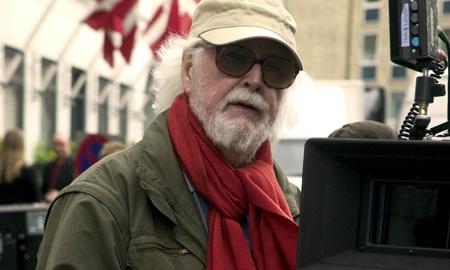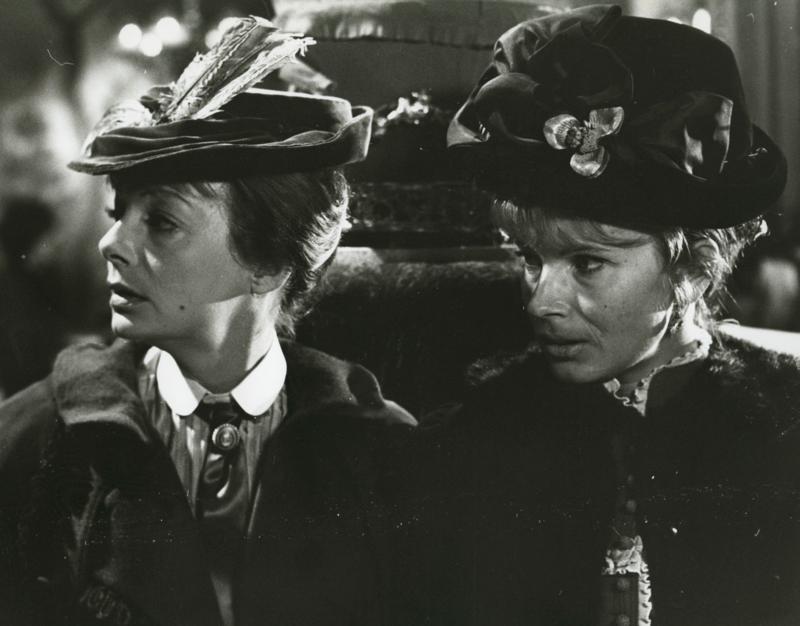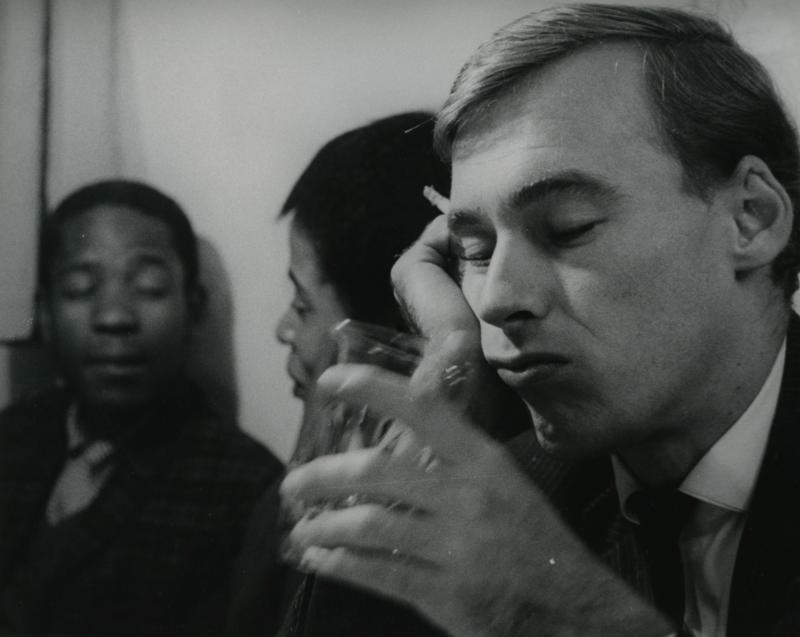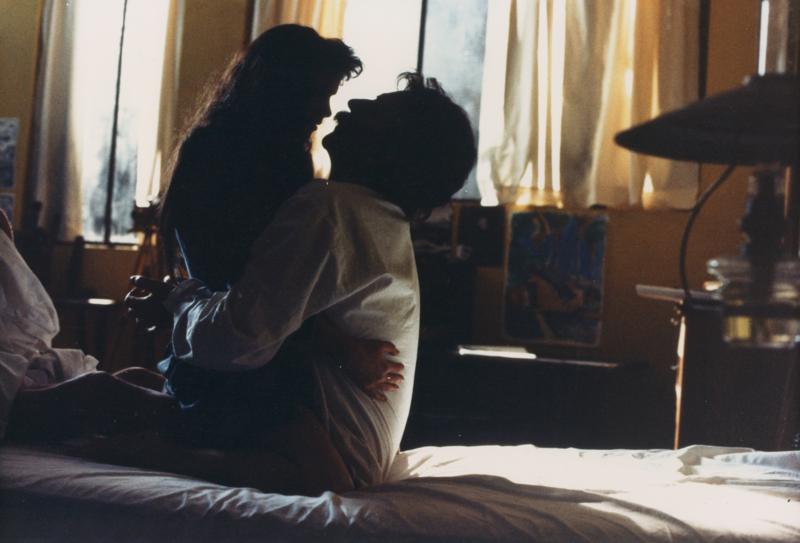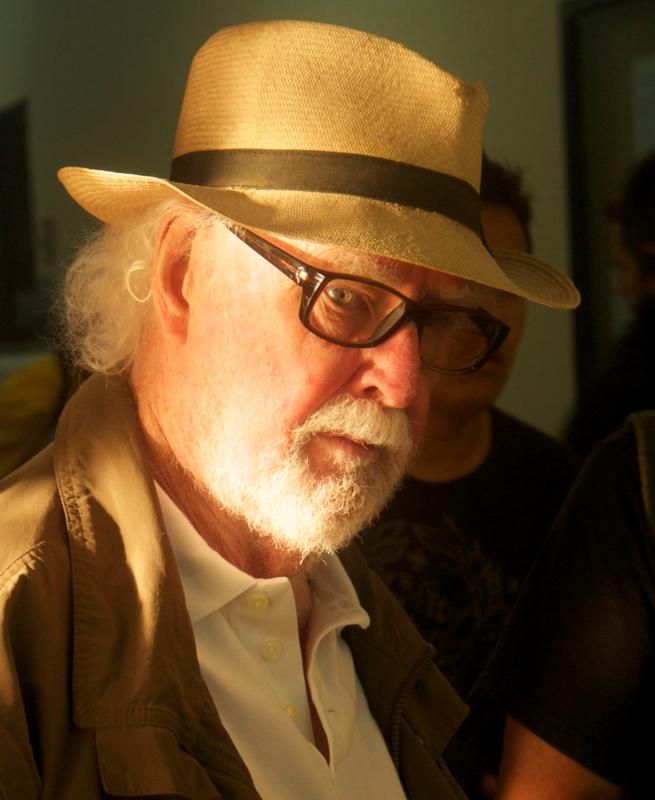"I was always met with the reaction: 'Well, that's pretty good, Mr Carlsen, but 'Hunger' was better.'"
This statement typifies Henning Carlsen's humorous, down-to-earth clarity. But behind his mild manners lay analytical and emotional acuity, an iron fist in a velvet glove.
Carlsen's Anti-Heroes: Loners and Outsiders
For half a century Henning Carlsen was a lone wolf in Danish cinema, and it's hardly surprising that his preferred protagonists wereloners and outsiders, as well. Male misfits tending to clash with the uncomprehending world around them, they are proud, hypersensitive and often have a, mildly speaking, problematic relationship to women.
Carlsen directed his first feature film in the 1960s, his most productive decade. I think it takes personal experience of the production climate of the time, its countless restrictions of tacky folksiness, to fully appreciate how adventurously and courageously Carlsen swam against the stream, making personal films on his own terms.
He, among all Danish directors, became the adventurer, an energetic daredevil bursting with social engagement and an appetite for foreign scenery and near-suicidal challenges.
Going to Sea
Carlsen shot his first feature, "Dilemma" (1962), illegally, in apartheid-torn South Africa, a feat of rare audacity.
His masterwork, "Hunger" (1966), was made in Oslo as a Danish-Swedish-Norwegian co-production – an inter-Scandinavian coup at the time.
He went to Rio de Janeiro to interpret the Danish writer Jens August Schade's erotic fantasies in "People Meet and Sweet Music Fills the Heart" (1967). And in every sense of the word, he went to sea in his lavish Aksel Sandemose-adaptation, "We Are All Demons" (1969), another Danish-Swedish-Norwegian coproduction.
He opened the Cannes Festival with the French-language "A Happy Divorce" (1975), a Danish-French co-production shot in France with a cast including several local stars. The Gallic partnership was renewed in his Gauguin biopic "The Wolf at the Door" (1986), which had a screenplay by Jean-Claude Carrière and featured Donald Sutherland and "The Killing" star Sofie Gråbøl who made her debut in the film.
Even when he was well into his eighties, Carlsen didn't stay quietly at home tending his garden but went off to Mexico to shoot his adaptation of Gabriel García Márquez's "Memories of My Melancholy Whores" (2012). While infuriating feminists in Denmark and abroad, the film could well be seen as a daringly independent-minded, imaginative window into old age, sexuality and death.
Carlsen accomplished all of this without ever being a house director at any of the big, cash-strong production companies: he always stuck out his own neck serving as his own producer and, despite extended production lulls in recent years, he successfully navigated a long career in cinema – a miracle, really, considering that so many of his films rarely won outright raves and were anything but box-office hits.
Hunger: When Everything Came Together
Everything clicked when Carlsen made his masterwork, "Hunger."
After his original choice for the lead, Per Myrberg, cancelled, Per Oscarsson stepped into the role of a lifetime as proud, awkward Pontus wearing his nerves on his sleeve. Working with cinematographer Henning Kristiansen at the top of his game, Carlsen painted a visionary, black-and-white nightmare of a soul-crushing city, Knut Hamsun's Christiania.
The American critic Pauline Kael, hardly given to praise, wrote: "An intense and remarkable movie – a classic of the starving-young-artist genre." That Carlsen returned to Hamsun only after 29 years had passed, in his successful adaptation of "Two Green Feathers" (1995), speaks volumes about his disinclination to repeat himself and play it safe.
In a Jocular Vein
Carlsen's trademark loners – their creator's kindred spirits, presumably – live in a state of constant contention with the world around them, but most of all with themselves, giving many of his films a claustrophobic, even static, tinge.
But Carlsen also had a more jocular, pitch-perfect Danish side. It is especially evident in his collaborations with popular Danish writer Benny Andersen, in a success like the bitter-sweet comedy "Oh, To Be on the Bandwagon!" (1972), and in his pioneering documentaries of everyday life, such as 1961's "Old People" – two well-rounded films in an oeuvre that always aimed high, even if the individual works didn't always reach the desired altitude.
An Exemplary Film Career
Henning Carlsen may have been a lone wolf, but in many ways he was an exemplary director on the Danish film scene. He kept blazing new trails, starting the Nordic co-productions of the 1960s, co-founding the European Film College and, as long-time manager, making the Copenhagen Dagmar cinema a centre of arthouse film.
More than anything, Carlsen proved that it's possible, against all odds, to sustain an artistically rich and fruitful career over five decades by stubbornly holding on to his own projects and fighting like a lion to see them through.
